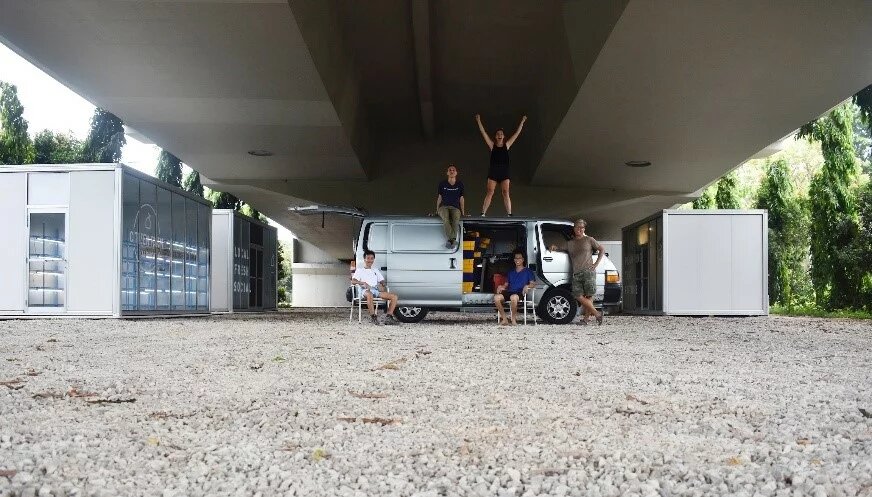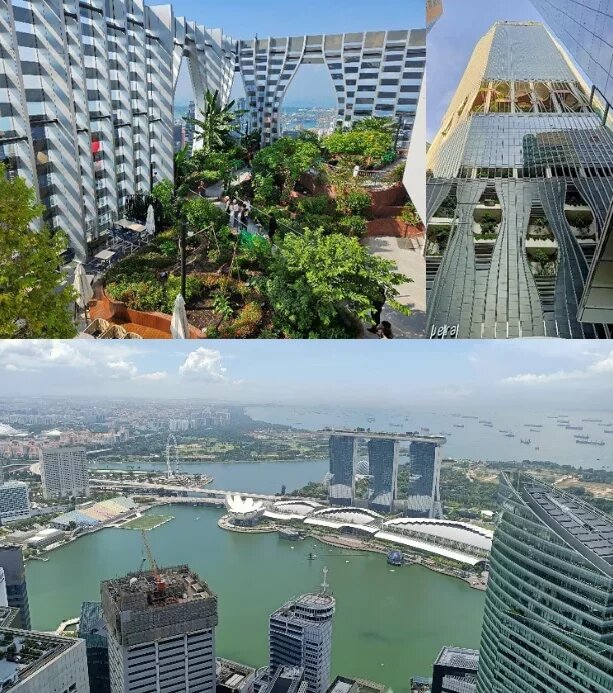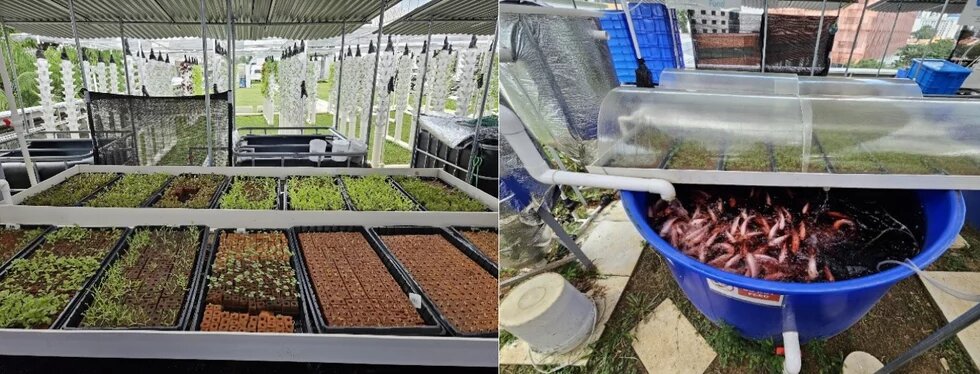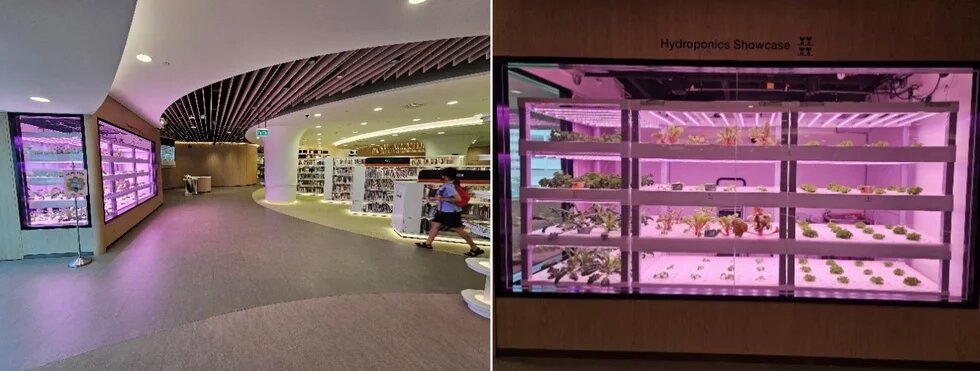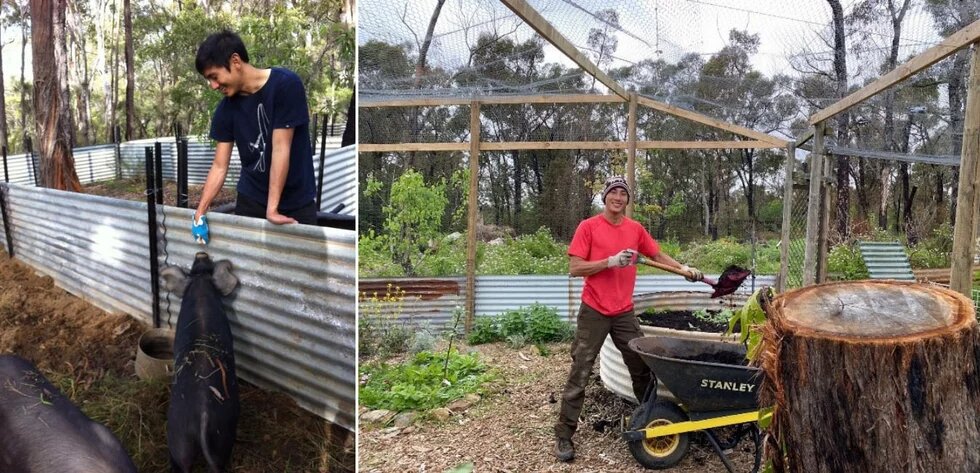
From rooftop gardens to hospital courtyards, cities are reimagining their relationship with food through urban farming. What began as small community projects has grown into a movement that brings resilience and sustainability into everyday life. With initiatives ranging from skyscraper farms to aquaponics systems in public spaces, urban food production is gaining ground.
This article by Christopher Leow explores how urban farmings are not just about growing food, but about cultivating community, ecology, and a sustainable future.
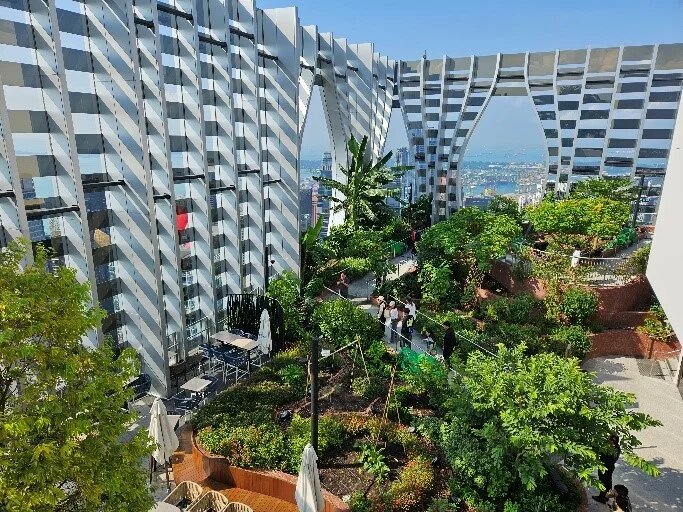
How I began my journey
I didn’t begin my food journey on a farm. I began in high-end fine dining French kitchens, plating intricate dishes with ingredients flown in from across the globe. It looked beautiful - but something felt fundamentally wrong. Ingredients were air flown from halfway round the world, nothing was sourced locally. Perfectly good pieces of food were discarded all for uniformity and a perceived perfection. My fellow chefs only relationship with food was from a supplier list, and not real farms. I knew that there had to be a better approach to our relationship with food.
In 2013, I left my career and traveled the world in search of a better food system. I found it - not in high-tech farms, but in indigenous communities, small organic farms, and community gardens in countries like Australia and Thailand.
Food systems rooted in ecology, seasonality, circularity, and deep community care. These couldn’t be measured in simple output metrics of yield - they represented a way of life that benefited the environment, which in turn supported people through clean air, water, and natural pest control. These communities respected the environment, they foraged in small amounts. They grew food in a way that benefited the diverse populations of microorganisms and animals. Waste was a foreign concept, everything was recirculated back as a resource.
When I returned to Singapore in 2016, armed with inspiration from the experiences I had, I wanted to transfer this knowledge back home. The only problem was, there was no arable land to do farming projects. You had to be a millionaire to own large tracts of government owned land to produce specific crops in a way.
Then I met Bjorn Low - my mentor, and founder of Edible Garden City - who saw what others didn’t: an opportunity. Green spaces all around us. Over 40% of Singapore’s landmass was green cover, just that it was not growing anything edible. Together, we built edible gardens on rooftops of shopping malls and hotels. We even tried growing microgreens and mushrooms in shipping containers under highway viaducts.
We tried growing everything in different spaces: tropical fruits, wild plants- also more commonly known as edible weeds, and edible flowers, and sold them to high end restaurants as well as for our community. Not all spaces had access to outdoors and sunlight, so we tried growing mushrooms and microgreens with grow lights indoors. There was a lot of experimentation, and trial and error. We gained more interest, city folk were intrigued in what we were growing and never knew that all of this was possible.
But the work was hard. Land access was temporary, with leases as short as three years - something unheard of in the world of farming. Policies were fragmented. Working in the city required agreement from multiple agencies to approve novel ideas. And because we were new, we were seen as fringe.
Then, the tides began to turn, and this idea of growing food locally had started to take root in mainstream policies and ground up movements. Policy makers had been studying the ground and began integrating policies to encourage urban farming. In 2021, Singapore launched the Singapore Green Plan 2030, a national sustainability roadmap to advance Singapore’s national agenda on sustainable development. It's a comprehensive framework that brings together multiple ministries to tackle climate change, reduce emissions, and build a green economy. Some of the highlights include:
Changing the built environment: The Urban Redevelopment Authority’s Landscape Replacement Act: Encourages developers to integrate greenery including urban farms into new buildings, which gave rise to icons like CapitaSpring - an urban farm atop Singapore’s second tallest skyscraper, and the world’s highest food forest farm. Creating a wonderful experience to tourists and giving people a taste of what could be grown locally- in the restaurants they serve, right beside the farm.
Empowering communities: The Ministry of Sustainability’s SG Eco-Fund: Grants to support community-led food production and education, culminating in hundreds of ground up projects, including in places you’d least expect, like the roof top of Singapore General Hospital- Singapore’s largest hospital, which has an aquaponics farm that converts fish waste into a powerful plant fertilizer. The vegetables are harvested for meals for the hospital patients
Empowering youth to be sustainability leaders: One of the most powerful shifts I’ve seen is the emergence of youth leadership in this space. Through school programs like the Eco-Stewardship, youth learn to compost, grow herbs, and understand circular systems from a young age. Some schools now have fully functional farm plots, often supported by educators and parent volunteers. A ‘Values in action’ program, empowers students to start their own community project related to sustainability and community. Students are not only growing food - they’re growing curiosity, responsibility, and a connection to the land.
A future edible garden city?
Globally, we’re also contending with climate shocks, geopolitical insecurity, and rising chronic diseases tied to diets of overabundance. If we keep treating food as a commodity, detached from people and place, we will remain vulnerable.
As countries continue to urbanize at breakneck speed: 2.5 billion more people will move from rural areas to cities by 2050, many leaving behind their connection to the land as farmers. I believe that in parallel, we need to continue to maintain people’s connection to the environment, and food. Fundamentally, it is statistically impossible to be fully self-sufficient in food in cities, due to the sheer number of people living in them, and the amount of land that is required to feed us with our current diets. There is still a place for growing food on a large, commercial scale. That is a reality that we may need to accept. It requires constant innovation and adaptation to bring food education and closer to people, a thriving ecosystem, involving private and public partnerships to do so. An indoor farm in a public library? Sounds bizarre but serves as a wonderful touchpoint to bring awareness to people about food.
As technology trends like automation and Artificial Intelligence continue to rise, we must keep an open mind but not be blindsided by it. A global belief in ‘high tech farms’ has caused the industry to shutter, with many high-profile closures in Singapore, due to the high cost of automation, and the relatively low price that people are willing to pay for vegetables. Even though the commercial farming industry appears to shutter in Singapore, the ground up movement is growing.
The National Parks Community in Bloom now registers close to 50,000 gardening members. More public spaces like schools and community centers are turning into micro-farms, it isn’t so much a novelty or a foreign concept anymore, but now, it’s a way of life.
What’s happening in Singapore with the urban farming movement is not isolated. Around the world, cities are reimagining their food systems in ways that align with ecology, community, and resilience.
In Seoul, South Korea, the city has integrated urban agriculture directly into its Master Urban Plan. Over 2,000 urban farms have emerged in schools, rooftops, community centers, and even old subway stations. The Seoul Metropolitan Government supports citizens with seeds, training, and even land-matching services - transforming food production into a civic activity rooted in education and well-being. The city’s goal is not just food output, but public participation.
Like Berlin’s Prinzessinnengarten, which thrives as a mobile, community-powered farm, these spaces are not primarily about commercial yield - they’re about biodiversity, inclusion, and climate resilience. They show us that urban farming can scale without losing soul, and that the most successful models blend policy support, grassroots energy, and ecological integrity.
People always ask me, what can we do? There are plenty of opportunities as an individual. Despite having relocated overseas to Canada, I remotely manage a company back home that creates experiential farm to table activities, help restaurants compost their food waste. I continue to manage a community garden in my neighborhood. Education is a perennial, I don’t see it stopping anytime soon, and my vision is that this movement spreads, and becomes commonplace globally.
__
Christopher Leow is an urban farmer, educator, TV host, and author of The Freestyle Farmer. Trained in aerospace engineering and technopreneurship, he shifted careers after a transformative experience on an off-grid farm in Australia that inspired his passion for sustainable food systems. In Singapore, he has led projects such as the 1-Arden Food Forest, founded The Freestyle Farmer consultancy, and created community initiatives like NUTOPIA, a rooftop garden offering free produce.
Disclaimer: This published work was prepared with the support of the Heinrich Böll Stiftung. The views and analysis contained in the work are those of the author and do not necessarily represent the views of the foundation. The author is responsible for any liability claims against copyright breaches of graphics, photograph, images, audio, and text used.
